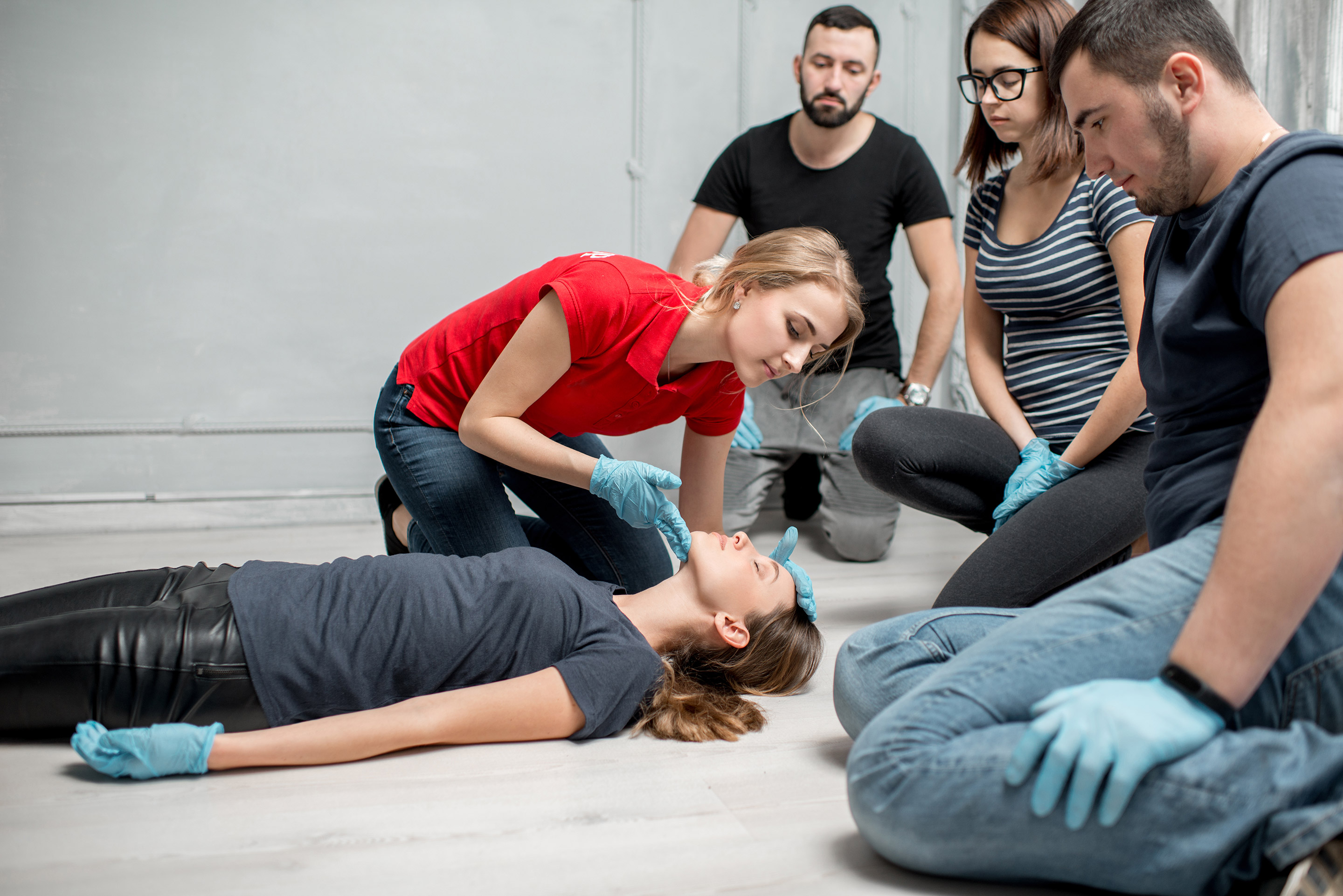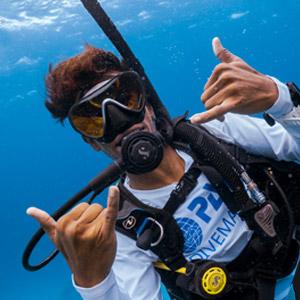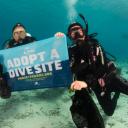
Emergency First Response® (EFR®)

Are You Prepared to Respond?
An accident can happen anytime, anywhere. Whether it’s a burn, scrape, broken bone, or something even more serious, it’s important to know what steps to take.
In a serious medical emergency, every second is precious and there’s no time to consult “doctor internet.” With first aid and CPR training from Emergency First Response® (EFR®), you’ll gain the knowledge and skills to help someone in need and become an essential link in the chain of survival.

Gain the Confidence to Care
Earn your CPR certification and learn basic first aid in a fun, non-stressful learning environment. You’ll practice bandaging, illness and injury assessment, and other essential skills that could save the life of someone you care about.
Gain confidence in your abilities through hands-on practice, and learn how to remember what steps to take in an emergency. Ask your EFR Instructor about EFR training.

First Aid, CPR Classes and More
Emergency First Response participant materials are available in 14 languages. In addition to Adult CPR and first aid courses, your EFR/PADI Instructor can provide AED training, teach you how to administer CPR and first aid to children and provide refresher training.

Why Emergency First Response?
Emergency First Response is one of the largest international CPR, AED and first aid training organizations. Every day, in 170 countries around the world, 56,000 EFR Instructors help individuals, communities and businesses prepare for emergencies. EFR Courses make learning easy by providing a non-stressful environment and learning tools to help students remember key procedures in an emergency.

EFR Primary and Secondary Care
Through a combination of knowledge development and hands-on skill practice, you’ll learn how to identify and respond to life-threatening emergencies (primary care). Learn how to identify a stroke, handle a spinal injury, administer CPR and gain other essential lifesaving skills.
During the secondary care part of the course, you’ll learn how to handle injuries or illnesses that are not immediately life-threatening. Learn how to bandage and splint injuries, burn care, what to do following an animal bite or sting and other basic first aid skills. Your instructor will help you build confidence through hands-on practice in realistic scenarios.

CPR & AED
An Automated External Defibrillation (AED) can increase someone’s odds of surviving cardiac arrest by up to 50 percent. Learn how to deploy and use an AED and perform basic CPR.
Please note, the EFR CPR & AED course alone does not meet the prerequisites for PADI Rescue Diver, Divemaster or Instructor courses. You may add AED training to a Primary & Secondary Care course. Contact a PADI Dive Shop or an EFR Instructor for more information or to register.

Care for Children
During the Emergency First Response Care for Children course, you’ll learn what to do if a child or infant is ill or injured. Find out how medical emergencies can be different for children versus adults and gain valuable insights about the emotional aspects of caring for children. You’ll also learn how to prevent common childhood injuries and illnesses.
Through knowledge development and realistic scenario practice, you’ll acquire the knowledge and skills you’ll need in an emergency or minor (but tear-inducing) mishap. Contact a PADI Dive Shop or an EFR Instructor for more information or to register for this course.

First Aid and CPR Refresher Training
Emergency care skills fade quickly if not practiced regularly. Experts recommend refreshing your CPR and first aid skills every year. Maintain your knowledge investment with an EFR Refresher Course, even if your original training was with another organization. Contact a PADI Dive Shop or an EFR Instructor for more information, or to register for this course.

Workplace Courses
EFR workplace courses include comprehensive, on-site training in CPR, AED use, and first aid, and can be tailored to meet local, regional, regulatory body requirements. Your Regional EFR Office can provide additional information and advice about workplace courses.

Pathogen Awareness and More
EFR also offers training in Airborne Pathogen Awareness, Mental Health Awareness and Manual Handling (lifting, carrying, pushing and pulling loads). Contact a PADI Dive Shop or an EFR Instructor for more information on these specialized courses.
More Information
Answers to common questions about Emergency First Response training
Rescue Diver students and Divemaster/Instructor candidates must have current (within the past 24 months) EFR Primary and Secondary Care training.
If you’ve completed CPR and first aid training elsewhere within the past 24 months, contact your PADI Instructor to confirm whether the training you receive meets the prerequisite. Please provide the name of the certifying organization, the course name(s) and any supporting documentation. Please note: online-only courses without hands-on training do not meet the prerequisite for any PADI courses.
What if I’m a healthcare professional? We recognize nurses, physicians and other healthcare professionals receive comprehensive medical training during their initial schooling. However, in the years that follow, some medical professionals do not use CPR and first aid skills frequently.
Our goal is to have PADI Rescue Divers, Divemasters and Instructors who are recently trained in CPR and first aid. With that in mind:
- If you work in a triage environment such as an emergency room and use your CPR and first aid skills regularly, simply provide your instructor with written confirmation from the facility where you work indicating this is your routine practice area.
- If your initial medical training took place within the past two years, provide your instructor with written confirmation from your educational facility that clearly indicates you received both first aid and CPR training and the course completion date.
- If you completed your medical training more than two years ago but you’ve participated in CPR and first aid refresher training, provide your instructor with information about the certifying organization and the course name(s). Your instructor will verify if the training you received covers the same topics and adheres to the same standards as EFR Primary and Secondary Care.
No. EFR Instructors use mannequins specifically designed for CPR training. EFR students also learn to use barriers (pocket masks) to practice safe and effective delivery of rescue breaths.
In the real world, you’re more likely to perform CPR on someone you know versus a stranger. Approximately 80 percent of cardiac arrests occur in the home.
Furthermore, studies have found chest compressions alone can be just as effective as chest compressions with rescue breaths provided the chest compressions are done correctly. This is why it’s essential to get hands-on, in-person training with an experienced instructor.
EFR courses follow the protocols and procedures developed by ILCOR (the International Liaison Committee on Resuscitation). ILCOR members include: the American Heart Association (AHA), European Resuscitation Council (ERC), Australian Resuscitation Council (ARC), New Zealand Resuscitation Council (NZRC), Heart and Stroke Foundation of Canada (HSFC), Resuscitation Council of Southern Africa (RCSA), Inter American Heart Foundation (IAHF), Resuscitation Council of Asia.
Emergency First Response courses have widespread international acceptance including:
- The American Council on Exercise (ACE)
- National Academy of Sports Medicine (NASM)
- The Health and Safety Executive (Great Britain) and (Northern Ireland) for the purposes of first aid in the workplace
- International scouting organizations (Girl Scouts USA, Scouts UK, etc.)
- International Yacht Training
- The United States Coast Guard (USCG) for a merchant mariner license
- Australia Council for Teaching Swimming and Water Safety (AUSTSWIM)
- ...and many others.
View a complete list of accrediting organizations.
All PADI Dive Shops teach EFR Primary and Secondary Care courses. You can also start this course online with our Primary and Secondary Care eLearning. Some provide additional training up to and including EFR Instructor courses. You can also find a local EFR Instructor using the EFR course finder.
Learn More About CPR and First Aid Training from EFR
Myths About Learning CPR
CPR is easy to learn and you don’t have to practice mouth-to-mouth on a stranger.
CPR and First Aid Do’s and Don’ts
Here are a few of the things you’ll learn during your EFR first aid and CPR training.
When Pizza Attacks
Do you know how to handle the most common accidents that can occur in your home?







 Marine Debris
Marine Debris
 Shark & Ray Protection
Shark & Ray Protection
 Adopt The Blue
Adopt The Blue












